13 Common & Rare Goldendoodle Colors
When you purchase through links on our site, we may earn a commission. Here’s how it works.
Goldendoodles are one of the most popular designer dogs in the U.S. Why? They combine the best traits of two favorite breeds: the Golden Retriever and the Poodle. Bred together, these traits include a love for life, sociability, fun, devotion, intelligence, and obedient natures. Plus, they’re so cute with their smiley faces and teddy-bear-like coats.
Table of Contents
When people think of Goldendoodles, they think of the golden coat. But did you know there are many more colors in the Goldendoodle coat rainbow? The reason for this is because the Poodle has a wide range of coat colors, markings, and patterns.
We’ll share with you the most common and rare Goldendoodle colors. We also uncover the differences between all of the marvelous markings you can find with this hybrid. We also explore which coat color is the most expensive and if any colors change over time. Let’s jump straight into the Goldendoodle coat color guide.
Common Goldendoodle Colors
Here are some of the most common Goldendoodle shades. Some are more common than others, but they are all equally beautiful in their own way. The most frequent colors are warmer hues seen on the Golden Retriever and vibrant color Poodles.
Apricot
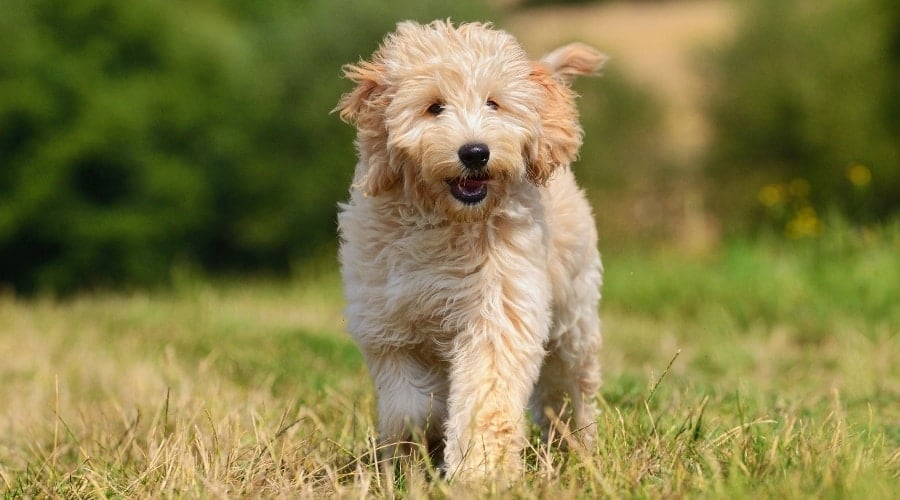
Apricot is a light creamy red shade and is one of the most popular Goldendoodle coat colors. They are more intensely shaded than tan-colored pups but lighter than reds. Identifying an apricot puppy is challenging because their coat starts darker but lightens over time. An apricot coat results from the recessive dilute gene that alters the red coat.
Chocolate
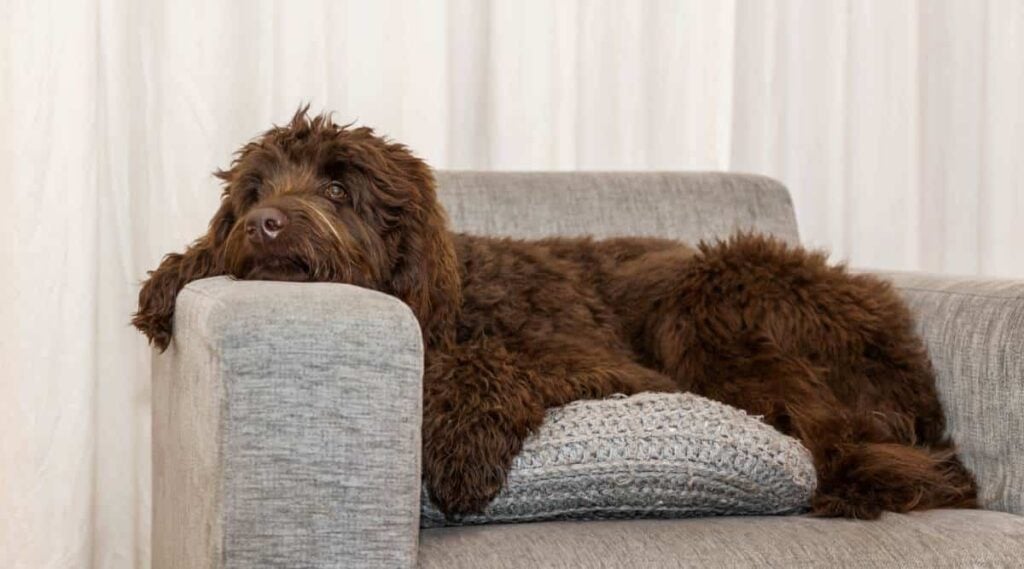
Chocolate or brown Goldendoodles are among the least common coats out of the typical coat colors. But they are more common than the colors in the rare section. They get their rich chocolate tones from their Poodle parent. They are frequently born black to very dark brown but lighten over time. Eventually, they can be light cafe au lait to an intensely rich chocolate color.
Cream
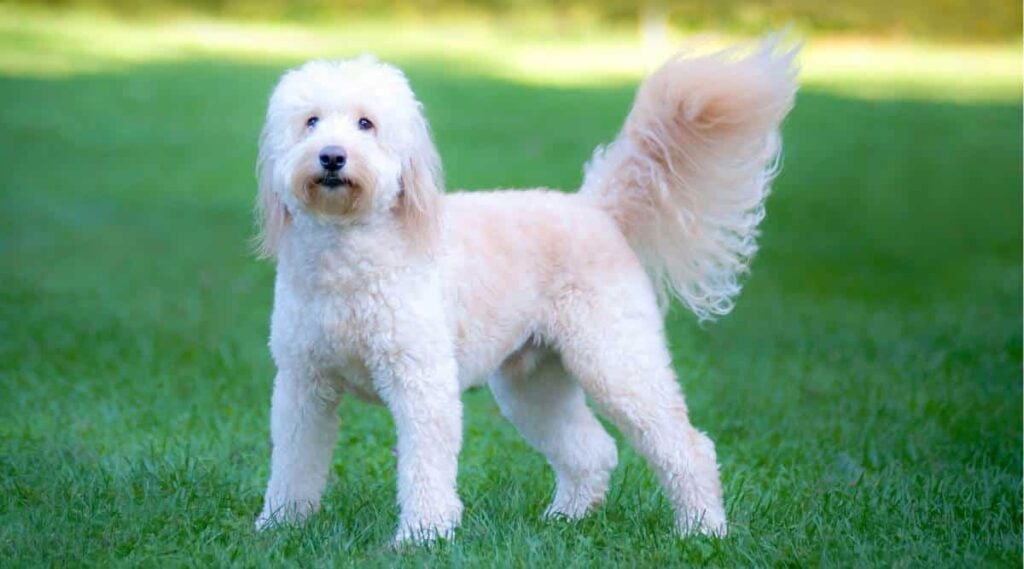
Cream is one of the least common out of the typical Goldendoodle colors. Puppies are usually born darker and can start with a light chocolate or apricot coat. Over time, it lightens to a pale cream. Breeders who want to produce multi-shade coats often use cream Goldendoodles as the additional colors are more evident on pups.
Red

Red Goldendoodles are another of the most popular shades, and that’s because their coat is vibrant. If a pup inherits the red color gene and a dilute gene, they become either cream, tan, or apricot, depending on the strength of the diluted gene.
Tan
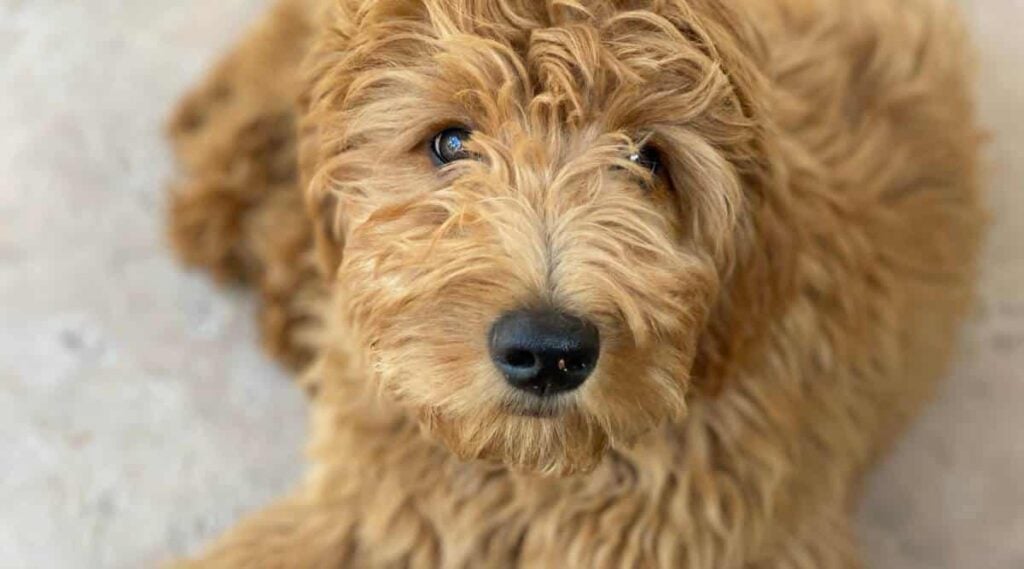
Tan Goldendoodles get their color from their Retriever parent, and they are sometimes called golden Goldies. It is more like a pale shade of gold and less vibrant than apricot or red, so they aren’t as popular as the other warmer hues.
Rare Goldendoodle Colors
Here are some rarer Goldendoodle shades you might have seen before. Some are rarer than others, and you might find that these pups are more expensive than the more commonly seen shades.
Black
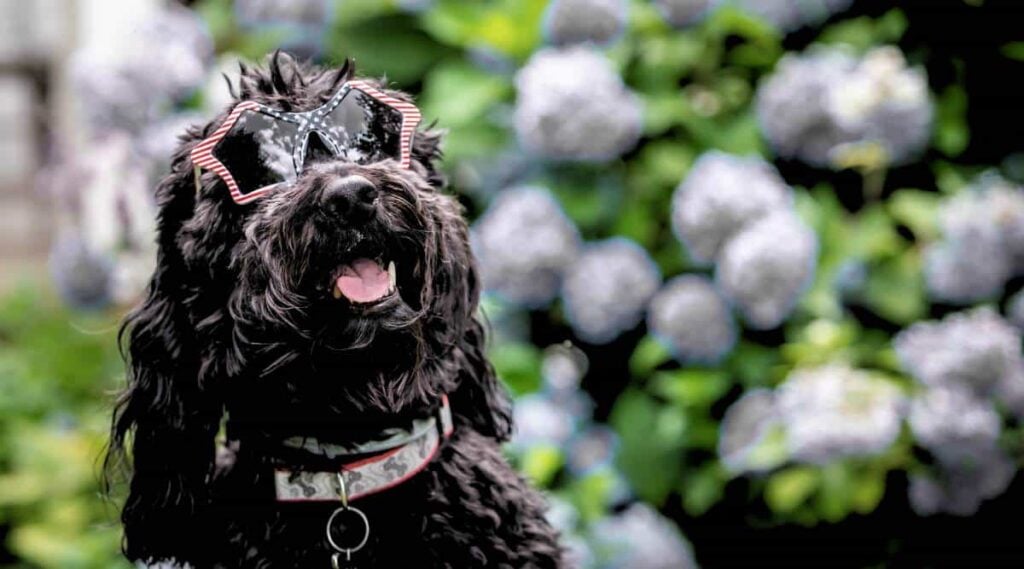
Solid black Goldendoodles are very rare, and all of their features, such as their noses, paw pads, and eye rims, must be black, too. Solid black is extremely rare because both parents must carry a recessive black gene.
Black & White
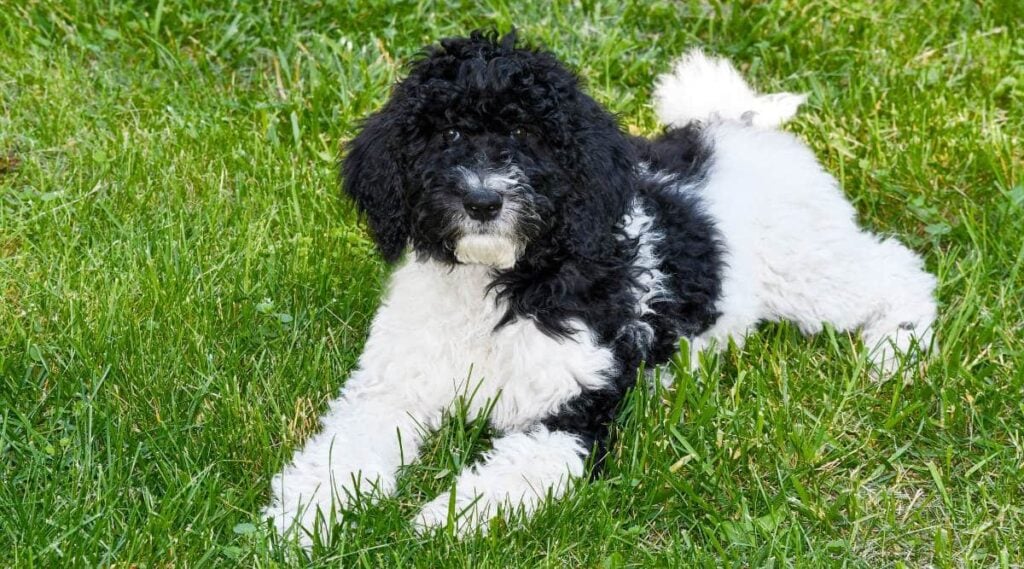
A black and white Goldendoodle describes a black pup with white markings. They are usually, and wrongly, confused for tuxedo, parti, or phantom pups. However, their markings do not fit these marking descriptions, so they are simply black and white Goldendoodles. Black and white dogs more commonly appear in later generations than first-generation Goldendoodles.
Blue
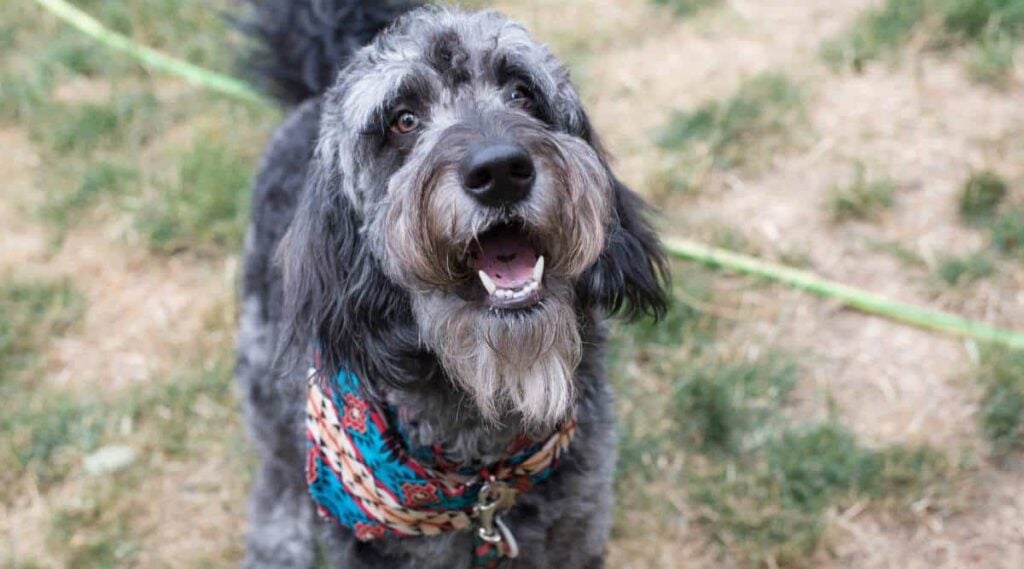
Blue-shaded pups look very similar to silver and gray dogs, but they are darker and more of a dark steel gray. A Goldendoodle with a blue coat is rare because they have inherited a dilute color gene, which takes several generations of Goldendoodle breeding. They must also have blue features. Blue puppies are born with a very dark coat and fade out, so it’s challenging to identify a blue puppy.
Champagne
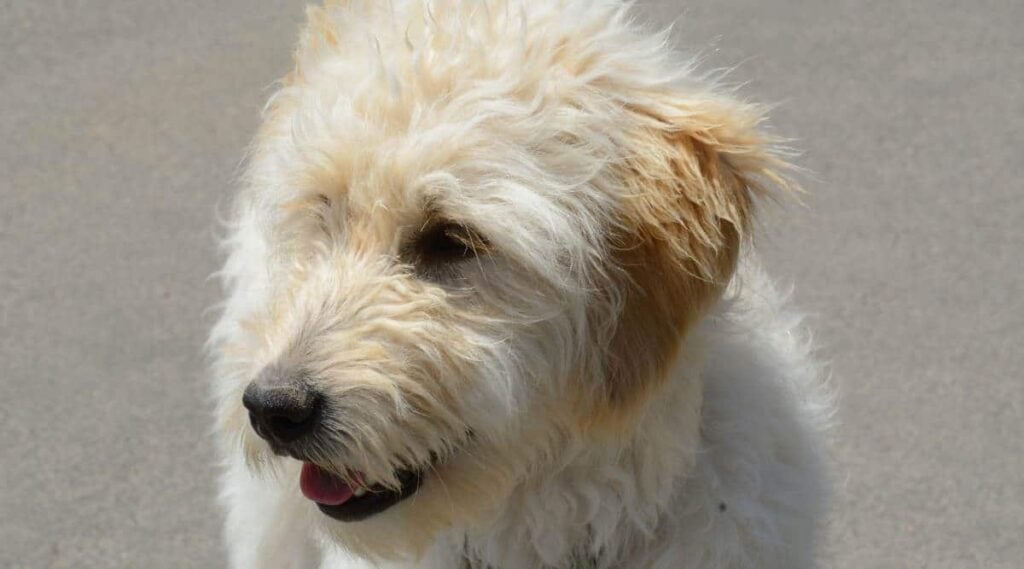
Champagne is a highly sought-after color because of its light creamy coat, with hints of gold and apricot highlights. This two-tonal effect is beautiful. Champagne pups are often confused with cream ones but have a yellowy-gold tinge to their coat.
Gray
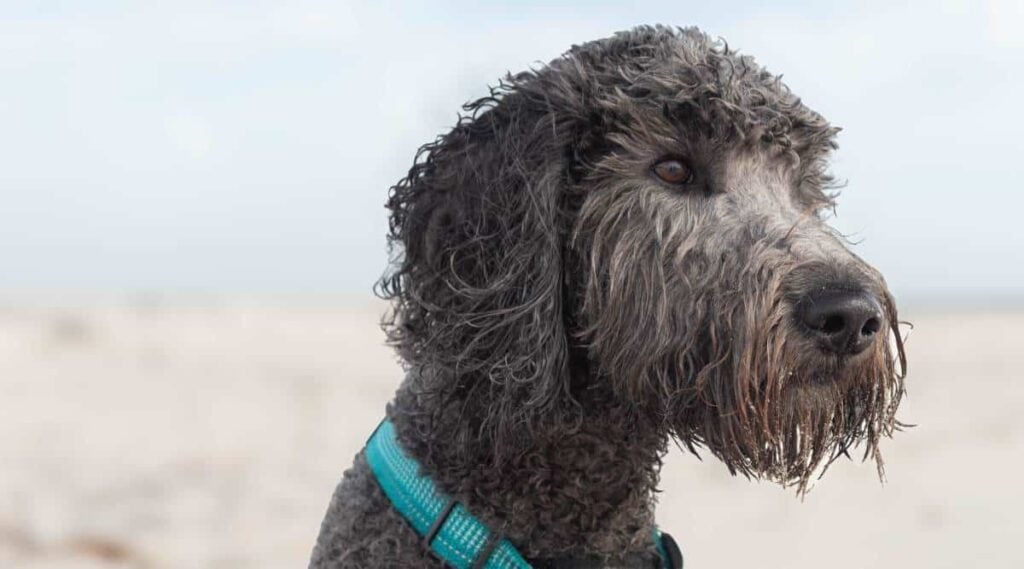
Gray comes from the Poodle side of the family, and although it is a standard Poodle color, it is much rarer in the Goldendoodle family. It usually appears after several generations of Goldies. Like most other colors, they are born very dark and lighten over time. Some gray pups keep the darker color around their face and ears, but they are not parti dogs.
Silver
Silver Goldendoodles are lighter than gray and blue color pups. They are born very dark but begin to exhibit their silvery hue between 6 to 10 weeks. This is a standard color in the Poodle line, but the warmer golden shades of the Retriever line make this icy shade much rarer in their mixed pups.
Silver Beige
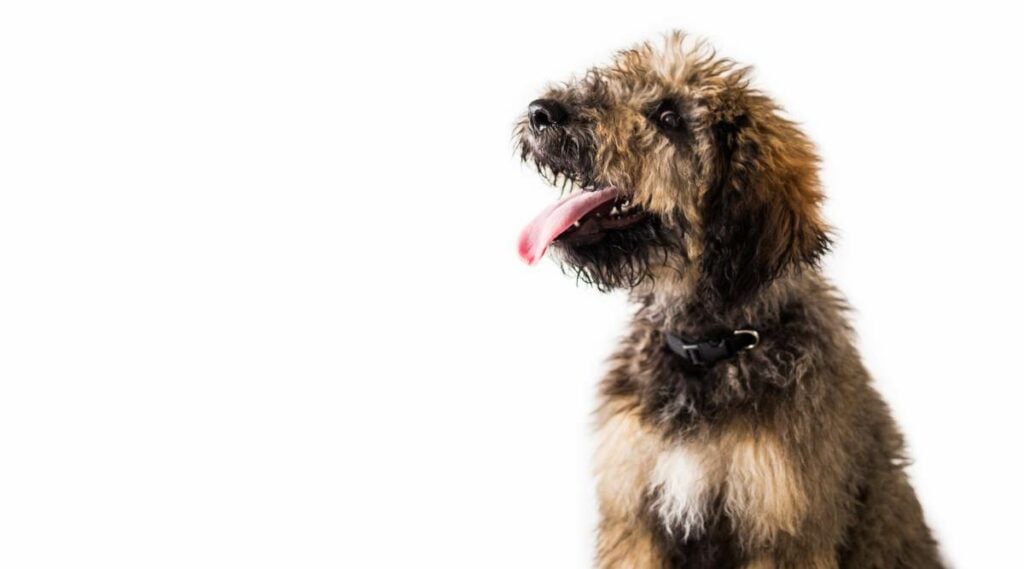
Silver beige pups are born in a similar shade to chocolate Goldendoodles, but their coat lightens over time and exhibits a silver shade. This is linked to the silver beige coat, which is a standard color in the Poodle line. Some silver beige Goldendoodles appear to have the sable pattern due to the mix of silver and beige colors, but if you look closely at the hairs, they do not have black tips, unlike sables.
White
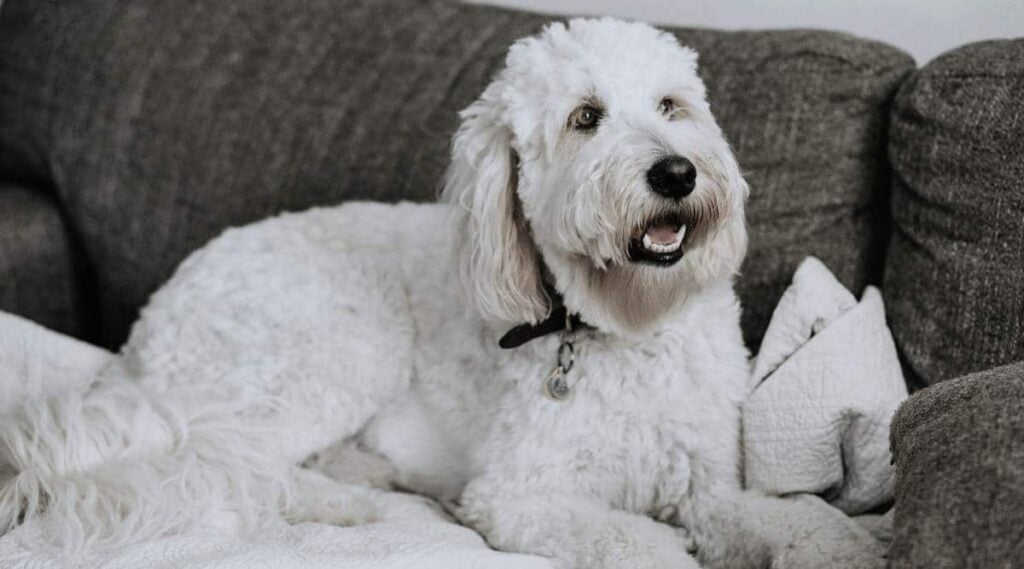
A pure white Goldendoodle is very rare. They are often confused with cream Goldendoodles as they often have creamy color parts of their coat, such as their ears or along their back. Because of this, some claim that white Goldendoodles do not exist. However, white Goldendoodles have a primarily white body compared to their entirely cream counterparts, setting them apart.
All white Goldendoodles should have some dark features like eye rims, noses, and paw pads. If their features are colorless or very pale, there is a chance they could be suffering from albinism. Although albino dogs can make excellent companions, they often suffer from health concerns and have shorter lifespans. Walk away from any breeder advertising an albino dog as a white Goldendoodle.
Goldendoodle Coat Markings
Abstract
An abstract Goldie has a mostly single-color coat with a touch of another color. The color patches typically appear on their face, chest, or paws. Abstract pups are commonly called chrome or mismarked Goldies.
Brindle
Brindle is another two-tone coat pattern, this time exhibited in the form of stripes. Although it can vary, most Goldies have a darker base coat color, such as black or brown, with lighter stripes. Brindle is rare, and it can be a difficult pattern to identify in dogs with wavy or curly hair.
Merle
The merle coat is another rare marking with mottled color patches, and it comes in two forms. The classic merle coat usually has some chocolate or blue patchwork and ticking on the coat. The watercolor merle lightens with age. If you’re buying a merle Goldendoodle, you must be sure that you’re not buying a double merle. This is where two merle dogs are bred together. A double merle dog has an increased chance of developing many health issues.
Parti
Parti coats consist of two distinct colors. The difference between an abstract and a parti coat is that parti pups need a roughly equal mix of colors rather than a few color patches like the abstract marking. The colors are any of the above colors, usually with white. The Golden Retriever does not carry this gene. As this gene is recessive, and pups must inherit two, the parti coat only appears in the second and third generations.
Phantom
Phantom Goldendoodles are very rare, but they are stunning. They have a solid coat color, known as the base coat, which is either dark chocolate or black. On top of the base coat, they have lighter points around the eyes, muzzle, and legs. Phantom Goldies are sometimes mistaken for Doberman or Dachshund and Poodle mixed pups because of the similar markings. The phantom marking only appears in second generations and beyond. Their markings are apparent straight away and do not change over time like many of their other coat colors.
Sable
Sable is a rare pattern in Goldendoodles. Each hair has two tones, which are light at the roots and darken toward the tips. Most sable Goldies look dark from birth, but the lighter shading at the roots becomes more apparent over time. Many sable dogs keep the darker color around their face and ears.
Tuxedo
Last but not least is the tuxedo pattern, another two-tone coat. The coat can be any of the above colors, but it has to have white patches around the chest and the front legs. This charming pattern gives the impression that the dog is wearing a tuxedo. These are very rare but desirable coats, and their markings are apparent from birth.
Frequently Asked Questions
We also want to include some questions and answers that our readers often ask about Goldendoodles. Don’t see your question here? Please ask us in our comments.

Are All Goldendoodles Hypoallergenic?
No, not all Goldendoodles are hypoallergenic. Firstly, no dog breed is 100% hypoallergenic. This is a myth. All dogs produce an allergy-inducing protein that can trigger allergies in some people. Poodles have the hypoallergenic label because of their low shedding. However, because Goldendoodles are related to Golden Retrievers, who are heavy shedders with a non-hypoallergenic coat, not all Goldendoodles inherit the hypoallergenic coat.
Goldendoodles backcrossed with Poodles have a much higher chance of being hypoallergenic. So, if this is an essential factor for you, make sure to discuss this with your breeder. But it is never guaranteed. So, if you need a hypoallergenic dog, you might be better off considering a purebred Poodle or a Poodle mix with two hypoallergenic parents.
Do Goldendoodles Change Color?
Many Goldendoodle’s coats lighten over time, and many are born dark and gradually lighten. For this reason, when you buy a puppy, don’t expect them to stay this shade forever. Some change color in the first few months, whereas others don’t develop their mature coat until two years of age. However, they only lighten in shade rather than change color completely.
What Color Goldendoodle Is Best?
There is no one better color. Instead, the best color depends on your preferences. Some owners like the golden hues of the Golden Retriever parent, whereas others prefer the rarer or more unique patterns and colors of two-tone coats. As long as your dog is healthy, their coat color isn’t overly important.
What Goldendoodle Color Is The Healthiest?
Goldendoodles are relatively healthy, and no one color is the healthiest. However, there are a few instances where their color, specifically the genes they inherit, can lead to color-related health problems. Albino, although not a color but a lack of color, comes with many health problems. So, when buying a white Goldie, you must be sure they are not an albino dog. Dogs that have inherited a dilute gene, which turns a coat from red to tan or apricot or black to blue, is sometimes linked to color dilution alopecia.
Are Goldendoodles Officially Recognized?
No, Goldendoodles are a hybrid breed and are not officially recognized by any traditional kennel clubs, such as the American Kennel Club. However, their purebred parents, the Golden Retriever and the Poodle, are. Alternative organizations, such as the American Canine Hybrid Club or the Designer Breed Registry, offer registration for mixed dogs and other generational pups.
What Color Goldendoodle Is The Most Expensive?
Like most dog breeds, some of the rarest colors are the most expensive because they are difficult to find and highly sought after. The phantom or the tuxedo pattern usually commands a higher price because they are rarer than solid coats and very striking. The price of a puppy is dependent on a wide range of factors, such as location, season, demand, and more.
Learn More About Goldens & Poodles
If you’re considering a Goldendoodle because they’re a super popular hybrid breed now, we encourage you to learn more about both breeds that make up this unique pup. Coloring aside, we encourage you to consider their personality traits as well. See our comprehensive guides on Golden Retrievers and Poodles to learn more about each of the Goldendoodle parents’ breeds.



